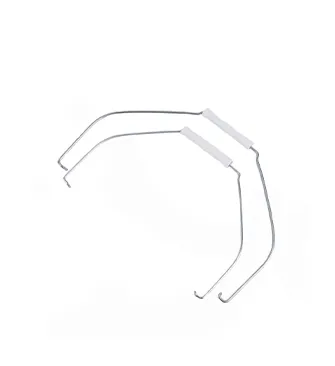-
 Phone:
Phone: -
 Email:
Email:

Calculating the Amount of Tie Wire Needed for Each Kilogram of Rebar Usage
Understanding Tie Wire per Kilogram of Rebar A Comprehensive Overview
When it comes to construction and engineering, understanding the various materials involved is crucial for project success. One essential component in reinforcing structures is rebar, or reinforcing bar. Its primary purpose is to provide tensile strength to concrete, which is inherently strong under compression but weak under tension. An often overlooked yet significant material in this context is tie wire. Understanding the relationship between tie wire and rebar, particularly in terms of weight metrics like tie wire per kilogram of rebar, can help in optimizing construction practices and ensuring structural integrity.
What is Tie Wire?
Tie wire, typically made of mild steel, is used for tying rebar together to form a reinforced framework before concrete is poured. It plays a critical role in ensuring that the rebar maintains its position, contributing to the overall stability and strength of concrete structures. The diameter of tie wire generally varies, with thinner wire being more common for tying purposes. Its flexibility and malleability make it an ideal choice for construction needs.
The Importance of Tie Wire in Rebar Installation
Rebar is often used in intricate configurations, and without proper tying, the bars can shift during the pouring of concrete, leading to inadequate reinforcement and potential structural failure. The use of tie wire ensures that the rebar remains in place, which is vital for achieving the desired load-bearing capacity. Additionally, the correct application of tie wire helps in preventing wastage of materials and ensures that the rebar achieves its intended design strength.
Tie Wire per Kilogram of Rebar
tie wire per kg of rebar

The concept of tie wire per kilogram of rebar refers to the quantity of tie wire required to adequately secure a given weight of rebar. This metric is crucial for determining not only the quantity of materials needed for a project but also their cost implications. Construction professionals aim to find an efficient balance between the amount of tie wire used and the structural needs of the project. Using too much tie wire can lead to unnecessary costs, while using too little can compromise structural integrity.
Calculating Tie Wire Requirements
Calculating the amount of tie wire needed per kilogram of rebar involves various factors, including the spacing between rebar ties, the gauge of the wire, and the specific structural requirements of the project. As a rule of thumb, the construction industry often uses a standard tie spacing (usually around 12 to 24 inches apart), which can be adjusted based on the load and configuration of the rebar.
Cost Implications
In addition to the technical aspects, understanding the ratio of tie wire to rebar also has financial implications. Material costs can significantly impact project budgets, and optimizing usage can lead to savings. For instance, if a construction team knows that it requires approximately 0.1 kg of tie wire for every kilogram of rebar, they can purchase materials more accurately and manage costs effectively.
Conclusion
In summary, the relationship between tie wire and rebar is fundamental to successful construction practices. The phrase tie wire per kilogram of rebar encapsulates an essential aspect of material management in reinforcing structures. By understanding how much tie wire is necessary to secure rebar effectively, construction professionals can ensure structural integrity while also managing costs. A thoughtful approach to this ratio not only enhances the quality of construction but also contributes to the overall efficiency and profitability of building projects. As the construction industry continues to evolve, such metrics will remain crucial in driving progress and innovation.
-
Wire Mesh for Every Need: A Practical SolutionNewsJul.25,2025
-
Steel Fences: Durable, Secure, and Stylish OptionsNewsJul.25,2025
-
Roll Top Fencing: A Smart Solution for Safety and SecurityNewsJul.25,2025
-
Cattle Farm Fencing Solutions for Maximum SecurityNewsJul.25,2025
-
Affordable Iron Binding Wire SolutionsNewsJul.25,2025
-
Affordable Galvanized Wire SolutionsNewsJul.25,2025
-
Wire Hanger Recycling IdeasNewsJul.25,2025








